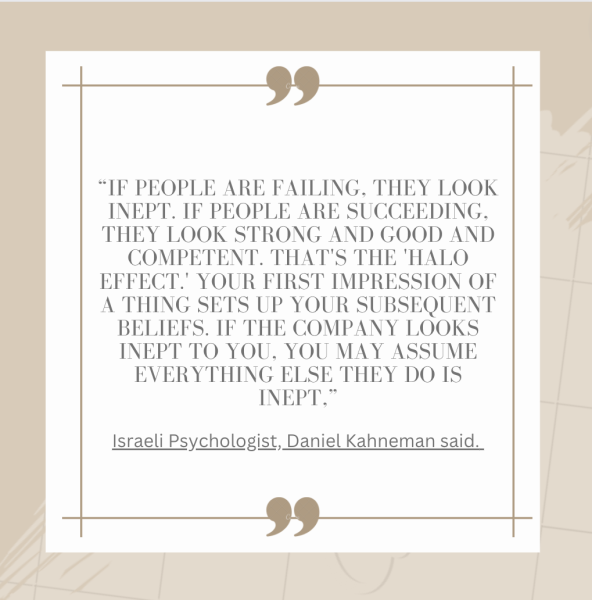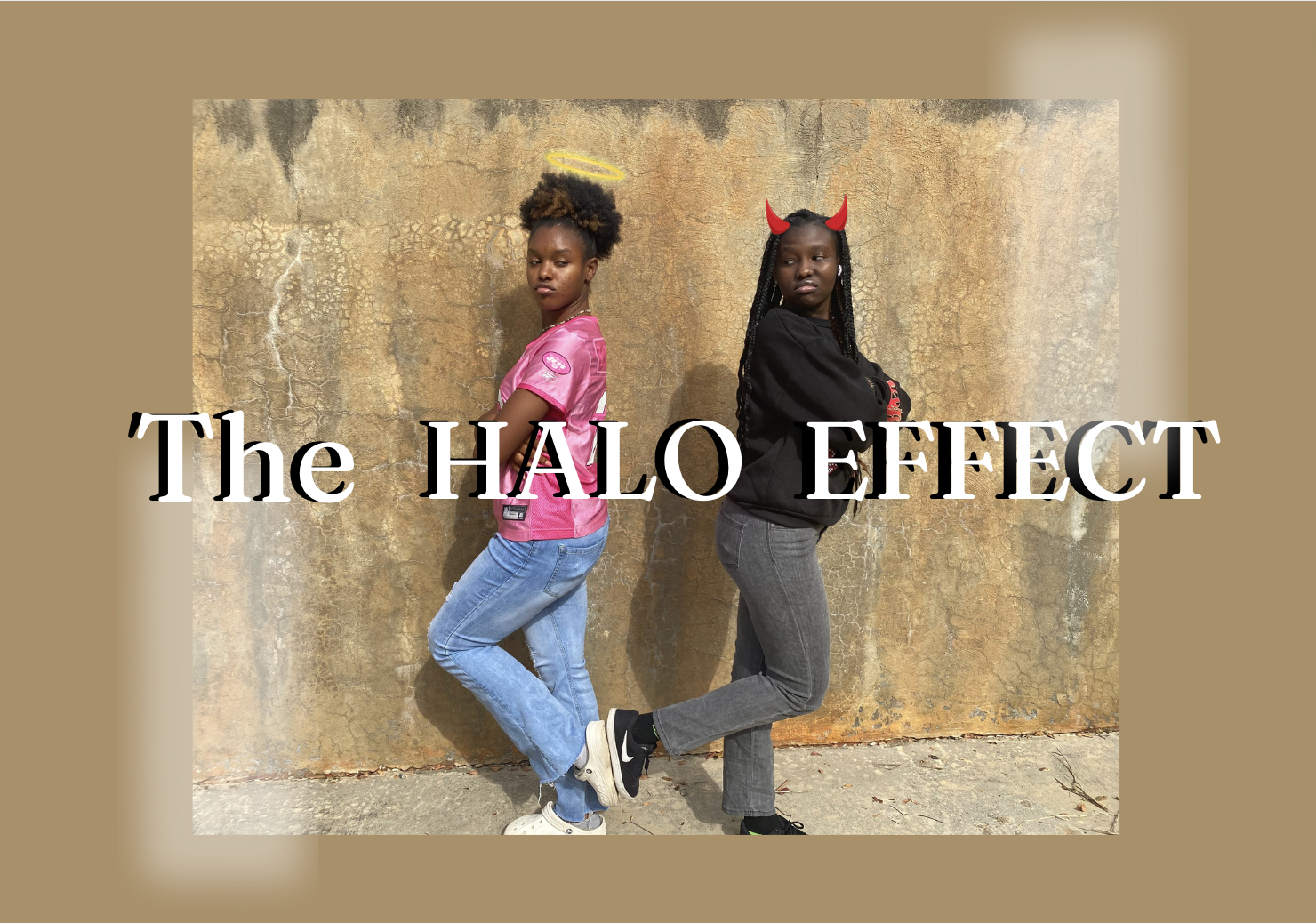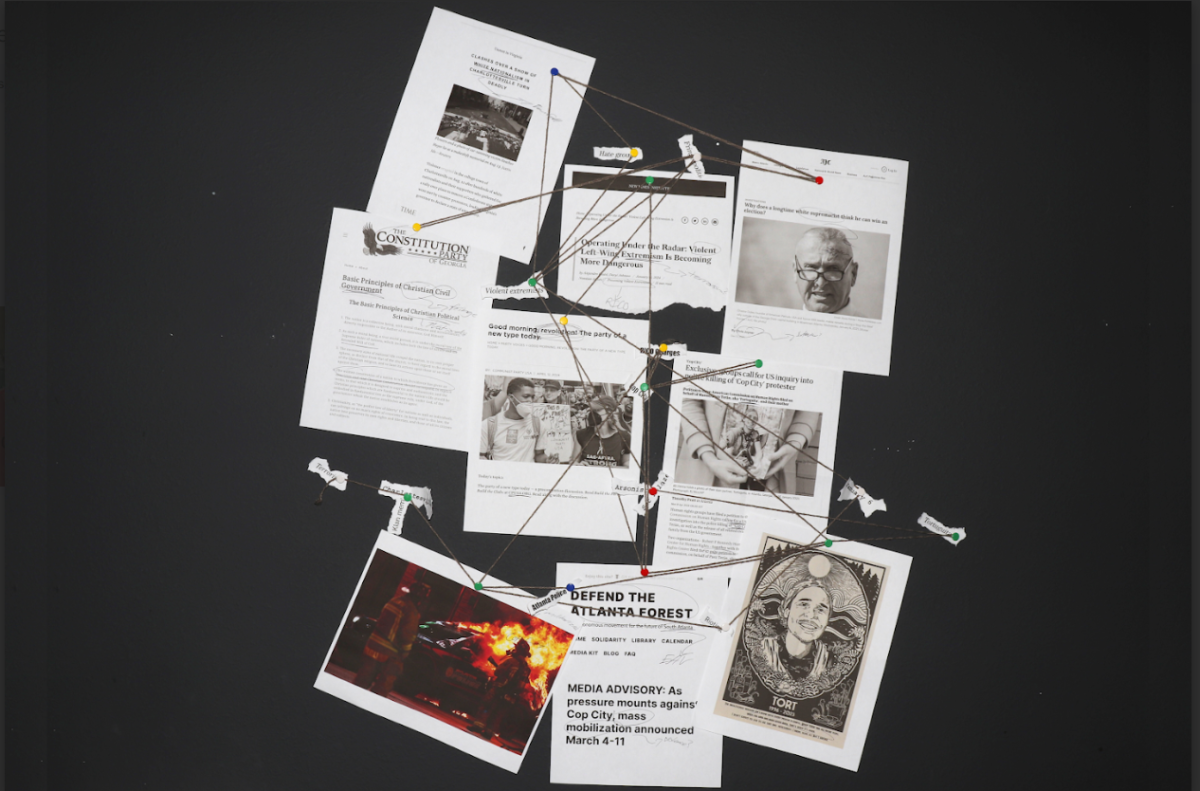The human mind contains an intricate web of cognitive processes, frequently influenced by subconscious biases that shape perceptions of the world. Among these biases lies an intriguing influence known as the halo effect. Coined by psychologist Edward Thorndike who analyzed the military leaders’ decision-making as they ranked soldiers’ outer appearances, intelligence and character, the halo effect remains prevalent even in today’s society.
The halo effect has advanced significantly in its ability to influence perceptions of a person’s character, abilities or qualities. People subconsciously alter the halo effect to view other people or materials differently based on what they have experienced or seen. In simpler terms, individuals may form a bias against someone based on a single trait they view in that person. From public spaces to schools to marketplaces, common areas of life all encompass possibilities for humans to experience the halo effect or see it in action.

A halo, a glowing circle or ring that surrounds the head of a holy person, represents spiritual qualities through the symbolism of the light. A halo in art, for instance, the Three Saints and The Virgin and Child with Saints, symbolizes a spiritual character’s inner force of energy. The art demonstrates that passing judgment proved a simple deed for determining a person’s character. In religious art, the presence of an actual halo portrays a person’s mind as holy and pure. Christian iconography widely uses the halo as an icon—In their paintings, Christians use the halo to underline the political meaning behind characters with great power and earthly dignity.
The halo effect holds the potential to change interactions between instructors and students. A study has shown that students might view teachers as attractive, appealing and likable if they perceive the teacher as warm and pleasant. In other situations, teachers may come out biased or against students based on how they seem with a halo effect. For instance, students with bad attitudes may turn out to achieve excellent academic work, but the teacher would still label them as poor students based on how they behave and viewed.
In the workplace, people may generate quick and positive assumptions about someone with a higher role or a well-known reputation. Socioeconomic standings, prior achievements or positions may encourage people to favor their coworkers’ or bosses’ attributes without much reasoning. Leading to increased possibilities and prestige, the halo effect can positively provide advanced benefits to people in the workplace. The type of attire worn—business, formal and casual—can also hold varying presumptions of status.
Furthermore, people who attend prestigious schools may assume that they possess greater intellect and skills than those who attend less prestigious institutions. Occasionally, the halo effect causes students from prestigious backgrounds to look down on others due to the outside factors of where they came from. Studies indicate that individuals from higher social classes may exhibit less ethical and selfish behavior compared to other peer groups with lower status due to a sense of entitlement. Given that prestigious schools come with a hefty price tag, students from higher socioeconomic backgrounds typically make up the overwhelming majority of their student bodies. A halo effect would demonstrate here how a person appears as prestigious since they attended a prestigious school. From the data collected, the majority of students appeared in the top 1% of the income range of the five Ivy League colleges—Dartmouth, Princeton, Yale, Pennsylvania and Brown—compared to the bottom 60 shown.
Socioeconomic status can provide factors of quality of life as well as the possibilities and advantages available to people in society. Not only does socioeconomic standing incorporate income, but it also includes educational achievement and personal perceptions of social figures and social class. Those who possess greater resources and a higher socioeconomic position live in environments that increase their personal power and freedom—larger and safer living places, the ability to purchase high-priced products and education with unlimited access. According to observers, these circumstances can lead to self-absorbed altruism toward the prestigious life. These people of high socioeconomic status can feel insularity from other classes because of their wealth and privilege. They will create a halo effect among those in lower socioeconomic classes and make accusations about those people’s ideas and beliefs.
The halo effect not only interferes with the walls of work and school but also in marketing ploys. The halo effect can influence how customers view brands and companies. Marketers and salespeople commonly take advantage of the effect to enhance their sales and prevent customers from buying from other businesses. Securing the endorsement of a well-known celebrity may promote a company or product by projecting a favorable image, which leads to various positive views. For instance, Nike and Michael Jordan share a partnership of mutual benefit, which has allowed them to grow into two of the most well-known sports companies in the world. After the Air Jordan 1 introduction, Nike sold $70 million within two months of the release. Jordan’s outstanding abilities, professional athleticism and determination to win at any cost marked his infamous basketball career. Nike, influenced by the halo effect, felt impressed by his skill and later sponsored him to benefit their brand, which aims to design comfort products for athletes.
“The halo effect could be a good thing in advertising. For example, if a person were promoting a product, they would create an advertisement that only showed the good qualities of the product so that people would buy it. The halo effect could be a negative thing because it creates a false illusion of a product or person,” Georgia State University Psychology major Shreya Paul said.
When the iPod launched on October 23, 2001, it became a hit, making up 40% of Apple’s revenue in 2006. No other company had successfully introduced a simple carry device to the market. The iPod’s popularity assisted Apple in expanding its market dominance and generating $383.29 billion in revenue in 2023. Based on the halo effect, customers who purchase items from well-known businesses—and receive favorable results—develop a cognitive bias in favor of the popular brand and its product lines. The effect lies in the idea that a business that excels in one field will thrive in other areas as well. This presumption could push a brand forward and lead to the development of newer items. Apple became an industry leader by continuously using the halo effect to promote iPhones, Macbooks and other iOS devices.

Other brands such as Nike sell the idea of running comfortably in their advertisements to gain profits in the market. Marketing uses psychology to capture consumers’ attention; Nike’s marketing strategy promotes the concept of an athletic and healthy lifestyle rather than shoes. This allowed the company to expand its popularity on social media: Nike now operates over 300 profiles and garners millions of followers. Nike employed high-profile endorsers such as Jordan and LeBron James to reach a popular consumer base that now holds a network activity score of 94%.
Another instance includes Burger King rebranding their logo to attract numerous customers to their food. Burger King relaunched with warmer colors to offer vibrancy in the hopes of appealing to customers and winning over their competitor: McDonald’s. Additionally, they redesigned the staff attire, making deep brown the primary color. The updated color scheme and font will also act as features in their advertisements for foods, menu boards, restaurant signs and merchandising. They apply the halo effect among themselves to attract and impress a larger crowd by changing their look.
“I think the halo effect can have a bad influence on people’s lives because it’s not reliable to judge people or objects based on their few positive qualities. It can lead to ignorance on certain issues and topics. A person may disregard someone’s negative traits or overestimate their potential because of the halo effect,” Paul said.
The halo effect represents an illusion that reflects individual preferences, individual preconceptions and societal perceptions. Without purpose, people will solely rely on first impressions or the immediate appeal they receive from someone or objects. Biases such as the ones inherited after learning that a person attended a prominent institution influence people to perceive ordinary strangers as exceedingly- skilled individuals. The halo effect also initiates first impressions and biases on physical attractiveness in both positive and negative ways. This explains why people who perceive someone as attractive and friendly will most likely assume that the person possesses other adequate qualities such as intelligence and positivity.
“I think people often correlate people’s personalities and their behaviors to the halo effect. They think that they may be able to get away with certain things and not work as hard because few people see them with the halo effect. People frequently use confirmation bias to confirm their ideology, emotions, or frequency of ideas about someone and how they look. The effect can be used to deceive someone and treat somebody else favorably. In a way, the halo effect can harm any relationship by falling into the fundamental attribution where we look at someone’s dispositions instead of their situation,” AP Psychology teacher William Hargis said.
The reverse halo effect, also known as the horn effect, can oversimplify human traits and behaviors with improper judgments and conclusions. Both the halo and horn effects include an abundance of perceptual aspects, including confirmation bias. Confirmation bias can affect interpersonal connections. When people develop opinions about others, they will seek to reinforce that opinion through subsequent interactions with the people on whom they develop an opinion. This will encourage those with confirmation bias to become closed-minded by ignoring peoples’ actual attributes and developing a nonexistent, different and characterized version in their heads about the people they interact with. This can lead to miscommunications and misunderstandings that may cause interpersonal relationships to deteriorate. Because confirmation bias leads people to only look for and acknowledge the behavior they seek—typically, positive—people may ignore the toxic or hurtful behaviors; for instance, normalizing domestic violence means believing that the behavior feels reasonable due to their belief in an idea. Conversely, people rely on selective perceptions, which means that if one already holds negative feelings toward his or her partner, he or she would also perceive their partner’s words or behaviors as negative.
“The effect can influence confirmation bias because when our overall judgment of a person is based on a few qualities, people are more likely to seek out information and evidence to support their belief. It can also harm relationships because it won’t allow you to see your partner’s potentially harmful or toxic behavior. This effect will make you idealize your partner, even though it could negatively impact your emotional needs,” Paul said.
The presence of the halo effect plays a significant role in people’s opinions and judgments. Enabling people to think positively or negatively—generally due to human physical traits, confirmation bias, marketing psychology and other causes.—people occasionally disregard or overlook apparent flaws in individuals, situations and products. Skewed images could lead to incorrect character judgments, inequity among others or even the loss of marketing values.
Nevertheless, biases remain difficult to overcome and require conscious effort to develop self-awareness. Even though the halo effect greatly influences society, individuals can choose to work against it or with it.
















